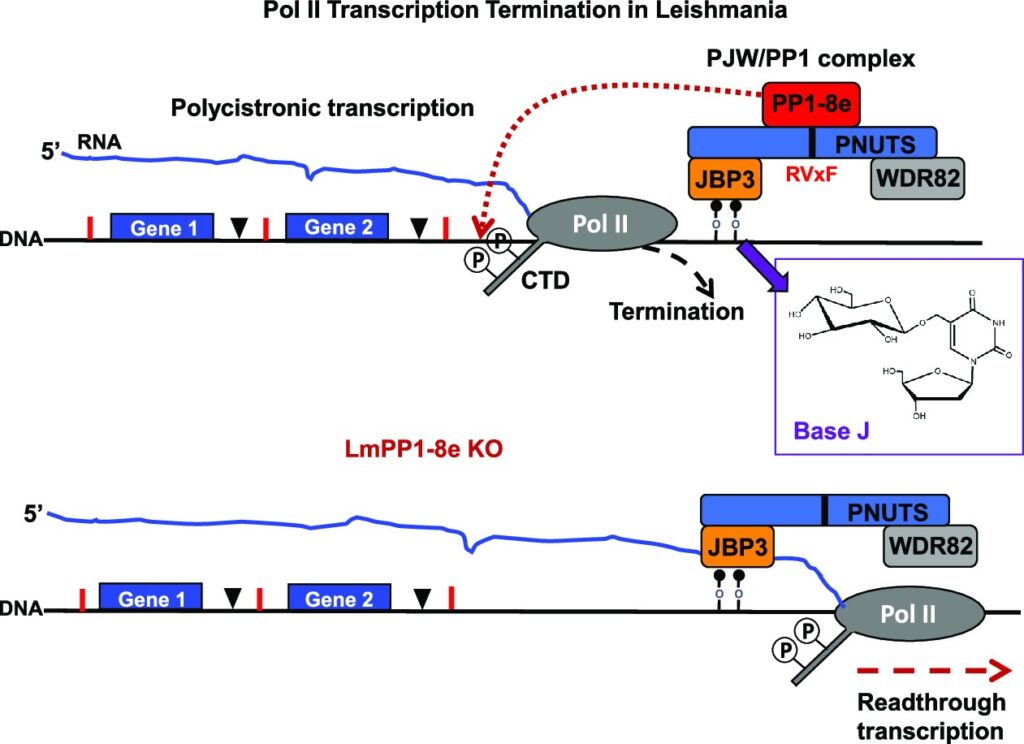Knockout of protein phosphatase 1 in Leishmania major reveals its role during RNA polymerase II transcription termination

The genomes of kinetoplastids are organized into polycistronic transcription units that are flanked by a modified DNA base (base J, beta-D-glucosyl-hydroxymethyluracil). Previous work established a role of base J in promoting RNA polymerase II (Pol II) termination in Leishmania major and Trypanosoma brucei. We recently identified a PJW/PP1 complex in Leishmania containing a J-binding protein (JBP3), PP1 phosphatase 1, PP1 interactive-regulatory protein (PNUTS) and Wdr82. Analyses suggested the complex regulates transcription termination by recruitment to termination sites via JBP3-base J interactions and dephosphorylation of proteins, including Pol II, by PP1. However, we never addressed the role of PP1, the sole catalytic component, in Pol II transcription termination. We now demonstrate that deletion of the PP1 component of the PJW/PP1 complex in L. major, PP1-8e, leads to readthrough transcription at the 3′-end of polycistronic gene arrays. We show PP1-8e has in vitro phosphatase activity that is lost upon mutation of a key catalytic residue and associates with PNUTS via the conserved RVxF motif. Additionally, purified PJW complex with associated PP1-8e, but not complex lacking PP1-8e, led to dephosphorylation of Pol II, suggesting a direct role of PNUTS/PP1 holoenzymes in regulating transcription termination via dephosphorylating Pol II in the nucleus.
Rudo Kieft, Yang Zhang, Haidong Yan, Robert J Schmitz, Robert Sabatini. Nucleic Acids Res. 2023 May 17;gkad394. doi: 10.1093/nar/gkad394. Online ahead of print.

